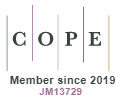Contested Space: The Living Urban Heritage of Hyderabad & Shahjahanabad, Delhi
DOI:
https://doi.org/10.15415/cs.2014.21004Keywords:
redevelopment, cultural economics, urbanismAbstract
This paper draws from the experiences of redevelopment of historic precincts in the cities of Hyderabad and Shahjahanabad, Delhi. Close interaction with the people, administrators and political leaders of these precincts reveal a great enthusiasm amongst all to improve the residents’ general standard of living. But the notion of ‘public realm’ as perceived by the public oficials and the public itself are radically different. The former see it as a commodity, while the latter lets the socio-cultural forces dictate its usage; and this difference hinders redevelopment. This paper contends that the lack of a common perception is due to the inability of the oficials in understanding the cultural economics and history of urbanism of the city-core, as a result of which most livelihoods become vulnerable. The paper also examines the relevance of regulatory and planning tools to historic Indian city-cores so as to sustain the city’s resources.
Downloads
References
CONZEN, M.R.G. (1975) Geography and Townscape Conservation. In Uhlig, H. and Lienau, C. (eds). Anglo-German Symposium in Applied Geography, GiessenWürzburg-München, 1973. Geographische Schriften. p. 95-102.
DOXIADIS, C. A. (1968) Man and Space Around Him. Saturday Review, LI (50). p. 21- 23.
FARR, D. (2008) Sustainable Urbanism: Urban Design with Nature. Hoboken, New Jersey: John Wiley & Sons, Inc.
HIRO, D. (2007) Blood of the Earth: The battle for the world’s vanishing oil resources. New Delhi: Penguin Group.
HOSAGRAHAR, J. (2005) Indigenous Modernities: Negotiating Architecture & Urbanism. USA and Canada: Routledge.
JAIN, A.K. (2007) Interface between Traditional Urbanism and Legislative Framework. In Prashad, D. (ed.) New Architecture and Urbanism: Development of Indian Traditions.New Delhi: INTBAU India.
INDIA. M/S KSHETRA (2008) Charminar Pedestrianisation Project, Study & Recommendations Report. Hyderabad: M/S Kshetra.MITRA, B. S. (2006) Grass Root Capitalism Thrives in India. In MILES, M.A., HOLMES, K.R. & O’GRADY, M.A. (eds.) 2006 Index of Economic Freedom. Washington, DC and New York: The Heritage Foundation and Dow Jones & Company, Inc.
NEUMAN, M. (2005) The Compact City Fallacy. Journal of Planning Education and Research. 25. p.11-26. [Online] Available from http://dx.doi.org/10.1177/0739456X04270466
PAROLEK, D.G., PAROLEK, K. AND CRAWFORD, P. C. (2008) Form-Based Codes: A guide for Planners, Urban Designers, Municipalities and Developers. Hoboken, New Jersey: John Wiley & Sons, Inc.
PRATT, A.C. (2007) The State of the Cultural Economy: The Rise of the Cultural Economy and the Challenges to Cultural Policy Making. In RIBEIRO, A. P. The Urgency of Theory. Manchester, UK: Carcanet Press/Gulbenkin Foundation. •
INDIA. PRADEEP SACHDEVA DESIGN ASSOCIATES (2008) Redevelopment of Jama Masjid Precinct, Study & Recommendation. New Delhi.
RANGWALA, K. (2012) Restorative Development Regulations. Urban Planning and Economic Development News Magazine. 1(January). p. 34-36.
SARIN, G. (2010) Sustainable Urban Design -- The Bigger Picture. SANEYCOP Newsletter. 2(2). p. 28-34.
SANYAL, B. (2005) Planning as Anticipation of Resistance. Planning Theory. 4(3). p. 225- 245. [Online] Available from http://dx.doi.org/10.1177/1473095205058495.
SCHAMA, S. (1995) Landscape and Memory. New York: Alfred A. Knopf.
SINGH, S. S. (2010) Form-Based Codes: An Alternative Method for Development Regulation. Institute of Town Planners, India Journal. 7(2). April - June 2010. p.27- 33.
INDIA. VAASTU SHILPA CONSULTANTS (1999) Hyderabad: Restructuring the Historic Core Project. Ahmedabad.
WILLIAMS, D.E. (2007) Sustainable Design: Ecology, Architecture & Planning. New York: John Wiley
Downloads
Published
Issue
Section
License
Articles in the Journal of Creative Space (Creat. Sp.) by Chitkara University Publications are Open Access articles that are published with licensed under a Creative Commons Attribution- CC-BY 4.0 International License. Based on a work at https://cs.chitkara.edu.in. This license permits one to use, remix, tweak and reproduction in any medium, even commercially provided one give credit for the original creation.
View Legal Code of the above-mentioned license, https://creativecommons.org/licenses/by/4.0/legalcode
View Licence Deed here https://creativecommons.org/licenses/by/4.0/
 |
Journal of Creative Space by Chitkara University Publications is licensed under a Creative Commons Attribution 4.0 International License. Based on a work at https://cs.chitkara.edu.in/ |







